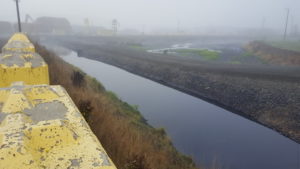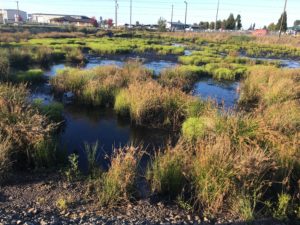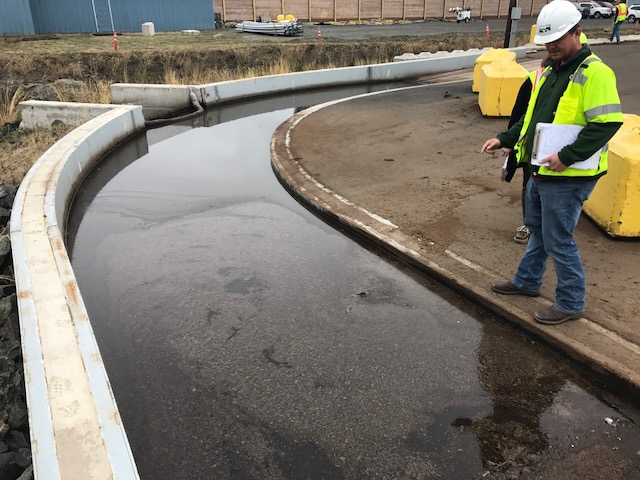In 2016, Seneca Saw Mill added several new functions to their site on Hwy 99, sparking a need to re-configure operations and leading them to think differently about how to manage water on site. Seneca has year-round water inputs, including log irrigation and process water from the kiln and Co-Generation Facility, plus stormwater from the 100+ acre site that sees 150 – 200 logging trucks a day, as many employee vehicles, and on-site equipment. When the Council reached out to Seneca, they already had an approved storm- and process-water management plan and a construction schedule, but they were open to suggestions.
Seneca’s water management plan consisted of a 1200 linear foot ditch that carried most of the site stormwater to a 1.6 acre detention area where the remaining site and process water also enters the system. Log irrigation water sheet flows into both the ditch and the pond. The Council conferred with our voluntary technical team and developed a set of recommendations which focused on two primary objectives: removing sediment before water gets into the primary detention area, and turning that detention area into the ecosystem it most closely resembles: a constructed wetland. This would allow the water to connect with healthy plant and soil communities before the water enters the A1 Channel, a tributary to Amazon Creek.



